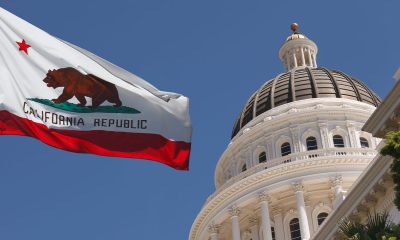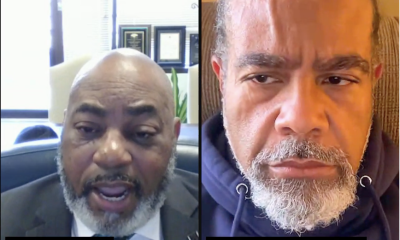Business
Study Confirms California’s $20/Hour Fast Food Wage Raises Pay Without Job Losses
A new study from Harvard Kennedy School and the University of California, San Francisco, says that California’s $20-per-hour minimum wage for fast food workers has led to significant pay increases without causing reductions in jobs, work hours, or benefits. The findings, based on data collected since the wage law took effect in April 2024, show that fast food workers across the state experienced hourly wage increases of at least $2.50, with the number of workers earning less than $20 per hour dropping by 60 percentage points.
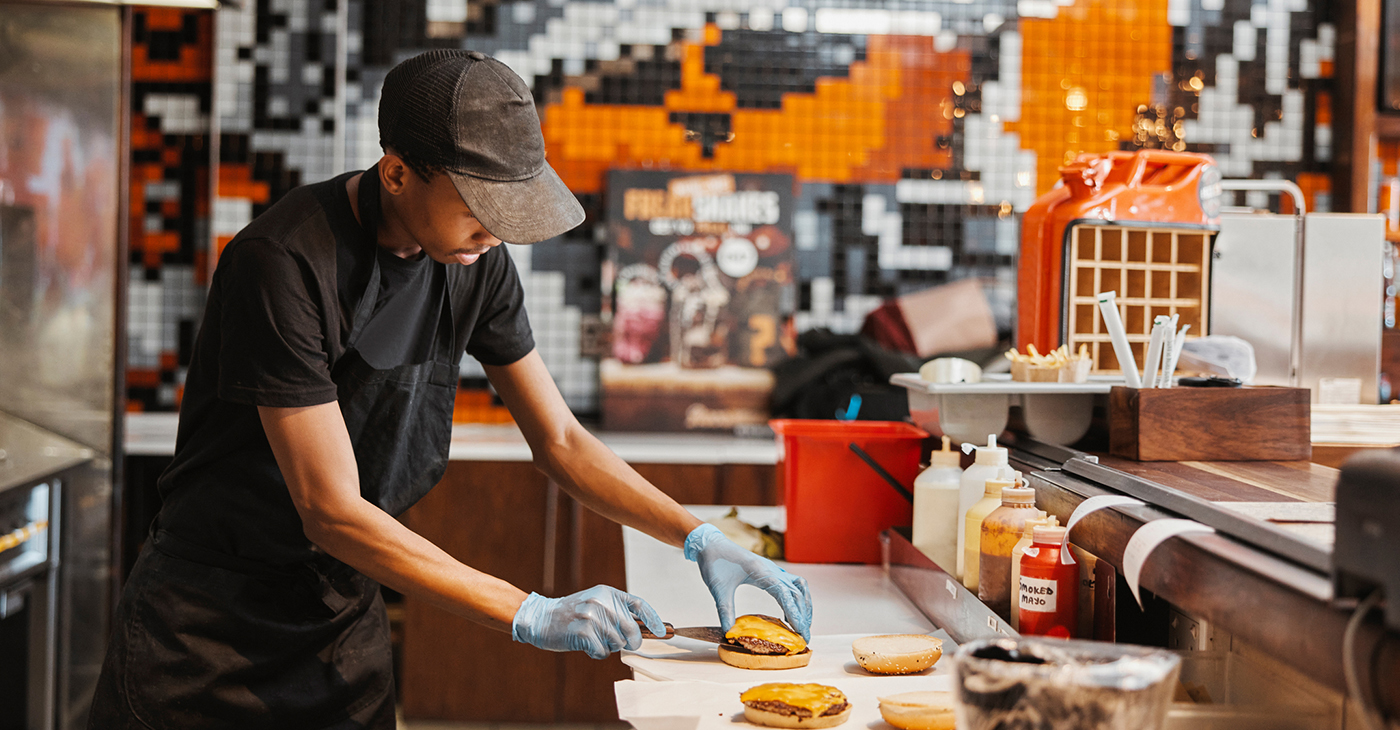
By Joe W. Bowers, California Black Media
A new study from Harvard Kennedy School and the University of California, San Francisco, says that California’s $20-per-hour minimum wage for fast food workers has led to significant pay increases without causing reductions in jobs, work hours, or benefits. The findings, based on data collected since the wage law took effect in April 2024, show that fast food workers across the state experienced hourly wage increases of at least $2.50, with the number of workers earning less than $20 per hour dropping by 60 percentage points.
“We find no evidence that wage increases had unintended consequences on staffing, scheduling, or wage theft,” the study reports. The researchers found that work hours were stable on a week-to-week basis, and there was no reduction in employee benefits, such as health insurance or paid time off. Instead, the fast-food industry added 11,000 jobs between April and July 2024, bringing the total number of fast-food jobs in the state to 750,500 — the highest level on record.
Assembly Bill 1228, authored by Assemblymember Chris Holden (D-Pasadena), not only raised the minimum wage to $20 per hour but also established the Fast-Food Council to oversee wages, working conditions, and health and safety standards for fast food workers. During the signing of AB 1228, Holden stated, “We did not just raise the minimum wage to $20 an hour for fast food workers. We helped a father or mother feed their children, we helped a student put gas in their car, and helped a grandparent get their grandchild a birthday gift”
The study contradicts claims from the fast-food industry, which had expressed concerns that the wage increase would mean layoffs, a cut in service hours, and an increase in menu prices. However, the study found no significant changes in employment levels, work schedules, or benefits. According to the report some challenges, like underemployment and unpredictable scheduling, remain but existed prior to the wage hike.
Gov. Gavin Newsom has previously voiced strong support for the wage increase, saying, “We’re ensuring that workers in fast food — the backbone of many families — can actually afford to live in the communities where they work.”
The study’s findings align with earlier research from UC Berkeley’s Institute for Research on Labor and Employment, which showed no significant reduction in employment and only a modest increase in menu prices.
The study’s results highlight that California’s approach to raising the minimum wage has delivered higher pay for workers without the negative effects some had predicted, providing economic stability for thousands of fast-food workers across the state.
Alameda County
Seth Curry Makes Impressive Debut with the Golden State Warriors
Seth looked comfortable in his new uniform, seamlessly fitting into the Warriors’ offensive and defensive system. He finished the night with an impressive 14 points, becoming one of the team’s top scorers for the game. Seth’s points came in a variety of ways – floaters, spot-up three-pointers, mid-range jumpers, and a handful of aggressive drives that kept the Oklahoma City Thunder defense on its heels.

By Y’Anad Burrell
Tuesday night was anything but ordinary for fans in San Francisco as Seth Curry made his highly anticipated debut as a new member of the Golden State Warriors. Seth didn’t disappoint, delivering a performance that not only showcased his scoring ability but also demonstrated his added value to the team.
At 35, the 12-year NBA veteran on Monday signed a contract to play with the Warriors for the rest of the season.
Seth looked comfortable in his new uniform, seamlessly fitting into the Warriors’ offensive and defensive system. He finished the night with an impressive 14 points, becoming one of the team’s top scorers for the game. Seth’s points came in a variety of ways – floaters, spot-up three-pointers, mid-range jumpers, and a handful of aggressive drives that kept the Oklahoma City Thunder defense on its heels.
One of the most memorable moments of the evening came before Seth even scored his first points. As he checked into the game, the Chase Center erupted into applause, with fans rising to their feet to give the newest Warrior a standing ovation.
The crowd’s reaction was a testament not only to Seth’s reputation as a sharpshooter but also to the excitement he brings to the Warriors. It was clear that fans quickly embraced Seth as one of their own, eager to see what he could bring to the team’s championship aspirations.
Warriors’ superstar Steph Curry – Seth’s brother – did not play due to an injury. One could only imagine what it would be like if the Curry brothers were on the court together. Magic in the making.
Seth’s debut proved to be a turning point for the Warriors. Not only did he contribute on the scoreboard, but he also brought a sense of confidence and composure to the floor.
While their loss last night, OKC 124 – GSW 112, Seth’s impact was a game-changer and there’s more yet to come. Beyond statistics, it was clear that Seth’s presence elevated the team’s performance, giving the Warriors a new force as they look to make a deep playoff run.
Activism
Oakland Post: Week of November 26 – December 2, 2025
The printed Weekly Edition of the Oakland Post: Week of November 26 – December 2, 2025

To enlarge your view of this issue, use the slider, magnifying glass icon or full page icon in the lower right corner of the browser window.
Activism
Oakland Post: Week of November 19 – 25, 2025
The printed Weekly Edition of the Oakland Post: Week of November 19 – 25, 2025
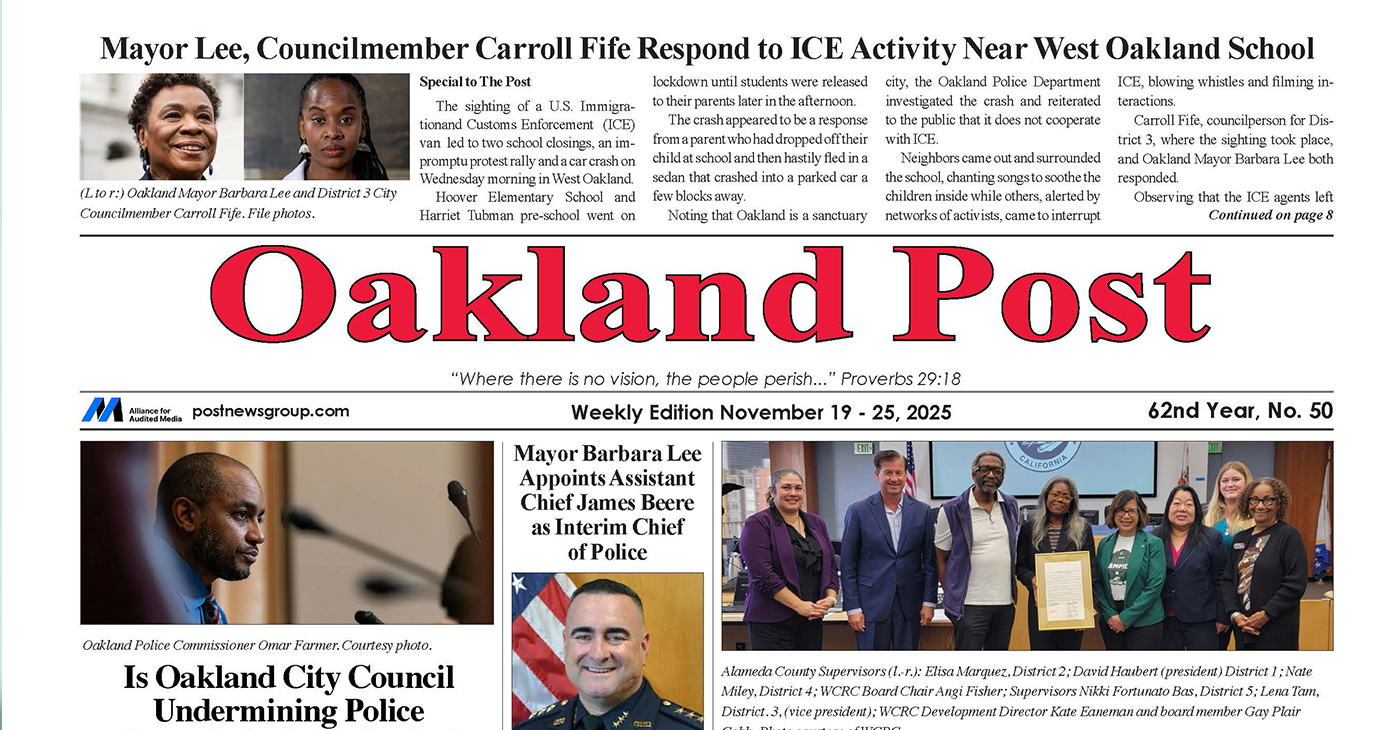
To enlarge your view of this issue, use the slider, magnifying glass icon or full page icon in the lower right corner of the browser window.
-

 Activism3 weeks ago
Activism3 weeks agoOakland Post: Week of November 12 – 18, 2025
-
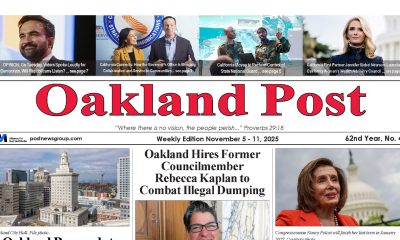
 Activism4 weeks ago
Activism4 weeks agoOakland Post: Week of November 5 – 11, 2025
-

 Activism2 weeks ago
Activism2 weeks agoIN MEMORIAM: William ‘Bill’ Patterson, 94
-

 Activism3 weeks ago
Activism3 weeks agoHow Charles R. Drew University Navigated More Than $20 Million in Fed Cuts – Still Prioritizing Students and Community Health
-

 #NNPA BlackPress3 weeks ago
#NNPA BlackPress3 weeks agoThe Perfumed Hand of Hypocrisy: Trump Hosted Former Terror Suspect While America Condemns a Muslim Mayor
-

 #NNPA BlackPress3 weeks ago
#NNPA BlackPress3 weeks agoProtecting Pedophiles: The GOP’s Warped Crusade Against Its Own Lies
-

 Bay Area3 weeks ago
Bay Area3 weeks agoNo Justice in the Justice System
-

 #NNPA BlackPress4 weeks ago
#NNPA BlackPress4 weeks ago2026 Subaru Forester Wilderness Review: Everyday SUV With Extra Confidence





